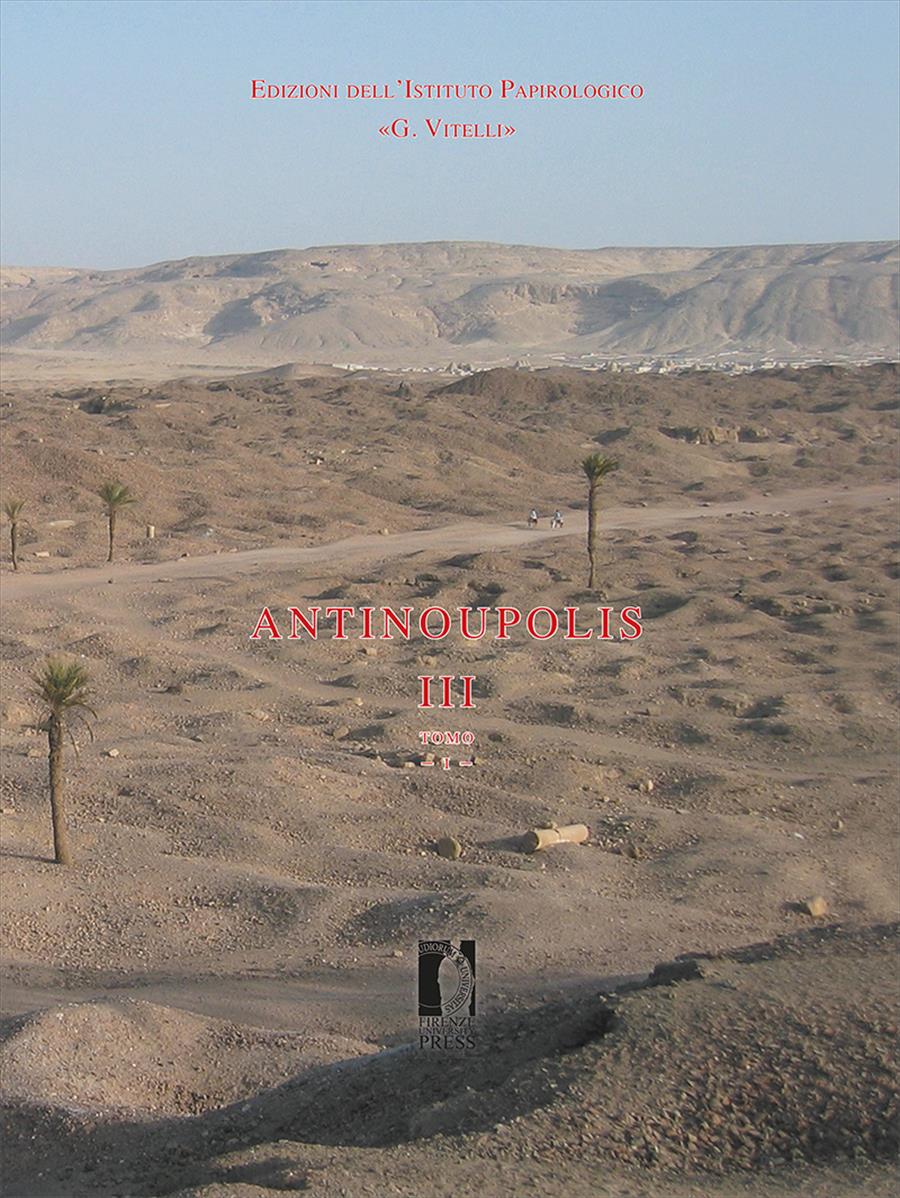Edited by:
Rosario Pintaudi
University of Messina, Italy - ORCID: 0000-0003-0537-395X
FUP Scientific Cloud for Books
Editor-in-Chief: Maltomini, Francesca University of Florence, Italy
Scientific board: 9 members, 7 research institutions, 4 nations
Authors: 1 authors, 10 editors
Books: 1 monographs, 9 edited booksAntinoupolis III, yet another volume having as its object an extremely important archaeological area in Graeco-Roman Egypt: the city founded on the left bank of the Nile in 130 AD by Hadrian in honour of Antinoos. Over 700 pages constitute the two volumes of this publication. The first volume proposes several studies on archaeological materials, such as African sealed ceramics, locally produced wine amphorae (LRA 7), stone mortars, sporadic fragments of ornamental stones, a cup with a glass-painted inside, fabrics of the so-called 'Coptic' type, as well as analysis of forensic anthropology on the bone remains of a certain Theodosia, whose funeral chapel had been discovered and illustrated in the excavations conducted on the site of the University of Florence in the mid-1930s. In the second volume, there are editions of new papyri, parchments and ostraka, with texts based on documents from everyday life or from the Classical and Christian literary culture. The involved languages are Ancient Greek, Coptic and Arabic. The inscriptions in these three languages, most of them funerary, bring forth significant novelties. The documentation is evidence of the life which, especially in the late ancient age, carried on in the remains of a large metropolis located in Egypt, one of the most important provinces of the Roman empire.
Ancora un volume, Antinoupolis III, che ha per oggetto un’area archeologica estremamente importante nell’Egitto greco-romano: la città fondata sulla riva sinistra del Nilo nel 130 d.C. da Adriano in onore di Antinoos. Nelle oltre 700 pagine dei due tomi che costituiscono questo volume si propongono, nel primo, studi dedicati a materiali archeologici quali ceramiche sigillate africane, anfore per vino di produzione locale (LRA 7), mortai litici, frammenti sporadici di pietre ornamentali, una coppa in vetro retro dipinta, tessuti della tipologia cosiddetta ‘copta’, analisi di antropologia forense sui resti ossei di una tal Teodosia, la cui cappella funebre era stata scoperta ed illustrata negli scavi condotti sul sito dell’Università di Firenze nella metà degli anni Trenta dello scorso secolo. Nel secondo tomo si presentano edizioni di nuovi papiri, pergamene, ostraca, che riportano testi costituiti da documenti della vita quotidiana o della cultura letteraria classica e cristiana. Le lingue interessate sono il greco, il copto e l’arabo. Novità di rilievo sono rappresentate da iscrizioni, per lo più funerarie, ancora in queste tre lingue. La documentazione è testimonianza della vita che, soprattutto in età tardo-antica, continuava in quel che restava di una grande metropoli romana in una delle province più importanti dell’impero, l’Egitto.







No comments:
Post a Comment